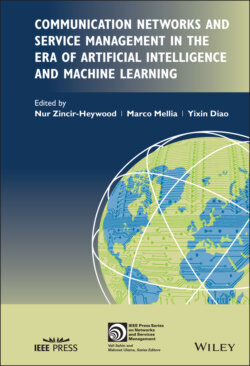Читать книгу Communication Networks and Service Management in the Era of Artificial Intelligence and Machine Learning - Группа авторов - Страница 34
2.2 Learning Algorithms
ОглавлениеMost researchers categorize learning algorithms into three major types based on the underlying characteristics of the task: (i) supervised learning, (ii) unsupervised learning, and (iii) reinforcement learning. In supervised learning, the aim is to learn a mapping from the input data to the output data whose correct values are provided by the ground‐truth (label) during training. In unsupervised learning, there is no such ground‐truth, there is only input data. Thus, the aim is to find the similarities in the input data. In reinforcement learning, on the other hand, the focus is on identifying a system that is capable of maximizing the cumulative reward received when explicitly interacting with an environment. However, independent from the task, ML has three key components, namely representation, cost function, and credit assignment. In this context, representation means the learning language used to build solutions. Examples include a neural network representation vs. representation in decision tree induction or instructions from a simple instruction set. The representation may also distinguish between those capable of supporting some form of memory and those that do not. Thus, recurrent representations define the current output as a function of previous “internal” state as well as the current input (state). If the representation does not support memory mechanisms, the resulting model is limited to reactive behaviors alone. Depending on the representation assumed, solutions might be more difficult to discover or costly to estimate. Supporting memory would be beneficial under tasks that are partially observable, but might also decrease the ability to establish how decisions have been made (transparency). Cost function refers to how the performance of a solution is evaluated, e.g. classification or prediction accuracy, posterior probability or how simple a solution should be. Credit assignment guides how the representation is modified, i.e. rewarding/punishing to guide the search process. In the following, we will discuss the types of ML in more detail to gain more insight and understand their uses.
